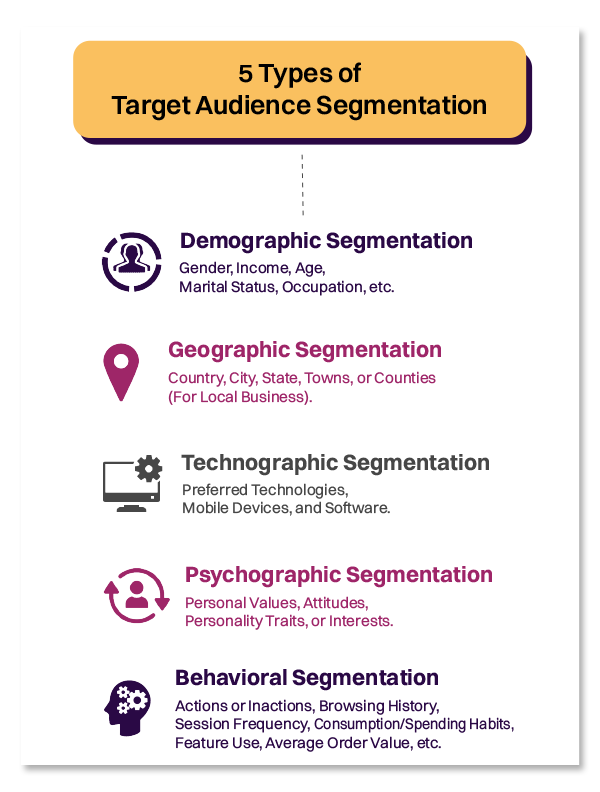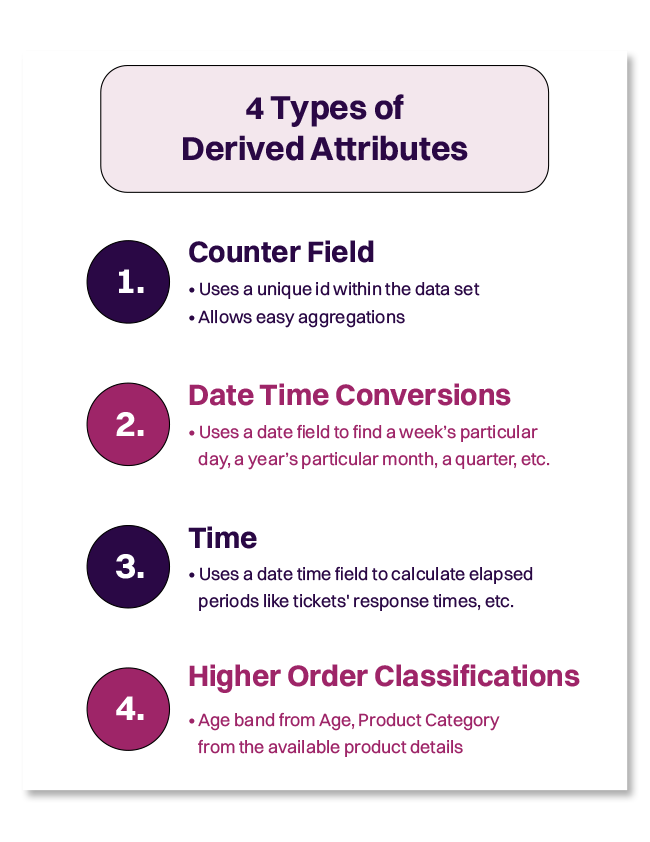
6 Easy Data Enrichment Techniques For Your CRM Improvement
Customer relationship management (CRM) is a unified space for keeping all the required to understand customers. Having a CRM system in place is important, but you shouldn't just trust every data it shows regarding your customers.
A major reason behind it is it usually shows outdated or incomplete customer data that hinders your ability to deliver the best-personalized experiences to customers.
This is where data enrichment techniques come in. They help enhance your existing customer data with additional information, such as social media profiles, behavioral data, and company information. Thus, you gain deeper insights into your customers and tailor their interactions accordingly.
We're a leading lead gen service provider. So, let us explore useful techniques for data enrichment and how they improve your CRM.
6 Reasons Why Your Business Needs Data Enrichment
1. Inaccurate Data Results In An Expensive Loss
Incorrect data is one of the biggest reasons for losing sales opportunities for businesses. Moreover, it also wastes marketing spending and results in dissatisfied customers.
In fact, a Gartner survey states bad data costs companies up to $13 million in annual expenses.
Additionally, inaccurate data leads to faulty business decisions, such as incorrect inventory forecasting or inadequate resource allocation.
Therefore, businesses must prioritize data accuracy and invest in data cleansing and enrichment techniques to mitigate these risks. By doing so, they can ensure that their CRM systems contain reliable and actionable data that drives growth and reduces CRR.
2. Build Meaningful B2B Relationships
To build effective B2B relationships, it's important to move away from generic, spam-like communication. Instead, focus on the personalization of messaging.
Today's customers want to feel understood, and with the help of data enrichment techniques, businesses can deliver more meaningful messaging and interactions.
Doing so can drive positive outcomes such as increased sales and upsells, ultimately contributing to a healthier bottom line.
3. Enrich Your CRM
It's common for CRMs to accumulate outdated and irrelevant data.
In fact, Salesforce states that up to 70% of CRM data becomes obsolete every year due to factors such as job changes and updated contact information.
Thus, valuable leads acquired through marketing efforts can become worthless without regular data enrichment.
To avoid this, you must prioritize contact data enrichment to ensure their data remains relevant.
4. Leverage Robust Personalization
The ability to grab key decision-makers attention and clearly understand their pain points and priorities can be the determining factor in securing a deal.
A company should put effort into researching and customizing its approach thoroughly to win over customers.
Data enrichment can be a powerful tool to go above and beyond basic personalization. It helps create personalized messages and experiences using machine learning techniques on enriched customer data right from the outset of the sales process.
5. Create Advanced Lead Scoring
When setting priorities for your sales team, evaluating and scoring leads can be a helpful strategy.
However, without enough customer information on hand, lead scoring is challenging. You can score complete customer profiles confidently with adequate data while incomplete profiles often need assumptions about the customer.
The use of enriched data can bridge this gap by upgrading an incomplete customer profile to an in-depth one. Thus, you’ll be able to assign an accurate and meaningful score to each lead.
6. Higher Profits With Advanced Segmentation
By segmenting your audience into smaller interest groups, you can significantly increase the return on your marketing investment.
This approach can help uncover new sales opportunities and unlock tremendous growth potential.
However, you need a wide range of customer data and segmentation categories at your disposal to fully reap the segmentation’s advantages.
Enriched data can greatly expand the scope of customers and segmentation categories available to you.
Thus, it enables you to segment your audience and capitalize on the potential benefits effectively.
6 Data Enrichment Techniques
1. Appending Data
When you append data to your data set, you get more consistent and reliable data from multiple data sources.
For example, with data appending, you can extract customer data from different systems such as CRM, financial, and marketing systems to get a better overall picture of your customer.
Additionally, using other sources, such as demographic or location-based data, can cover important aspects of your customers' needs.
2. Segmentation
The segmentation process divides a data object into groups based on predefined variables.
These data objects can generally be customers, products, or locations, and variables can be age, income, gender, etc.
Further, you can use different types of segmentation to categorize customers in more detailedly.
For example, a standard segmentation will include customers' demographic, geographic, and Behavioral elements.

3. Derived Attributes
These kinds of attributes or fields don't have storage in the original data set. Instead, they are derived from other fields.
For example, we can consider a customer's age as a derived attribute, as you can easily derive it with the customer's birth date field.
This enrichment technique helps you reduce the time consumed to perform a new analysis. Simultaneously, it maintains consistency and relevancy in used analysis measures.
Examples of derived attributes include counter fields, date time conversions, the time between, and higher-order classifications.

You can improve your analysis and reporting capabilities by creating derived attributes within the Extract, Transform, and Load (ETL) process or at the meta-data layer.
4. Imputation
Data imputation involves replacing inconsistent or missing values within fields to facilitate a more accurate data analysis. It is important to note that treating a missing value as a zero could lead to skewed aggregations.
For instance, if the value for an order is missing, estimating the value based on previous orders by that customer or for that bundle of goods can help maintain the accuracy of the analysis.
Data imputation is a critical technology that enables businesses to derive insights from their data despite lost values.
5. Entity Extraction
Entity extraction is a natural language processing technique that identifies and extracts specific information from unstructured text. It involves identifying named entities, such as people, organizations, and locations, and extracting relevant information about them.
Let's say you want to extract details about a restaurant, such as its name and location, through online customer reviews. As customers usually mention the place's name and tag the location they visited in their reviews, you can use entity extraction to get the needed information.
6. Categorization
Using data categorization, you can label available unstructured data and turn it into well-formatted data ready for analysis. There are two distinct categories of data categorization:
- Sentiment Analysis:
Sentiment analysis involves extracting emotional elements from text, such as determining whether customer feedback is positive, neutral, frustrated, or delighted. - Topication:
Topication, however, involves figuring out the text's topic, such as whether it is about house prices, politics, or sports. Better analysis of unstructured data is possible through both of these techniques.
4 Data Enrichment Best Practices
1. Clearly Define Acceptable Data Quality
Depending on your team's suggestions, define what data quality passes your business's standard. Also, determine what percentage of perfection you need in the extracted data if it is not 100% relevant and accurate.
Further, set up different standards for data quality (DQ) depending on the different data types and use cases.
2. Don't Use Data Silos
If you frequently silo data across various departments or physical locations, you may experience difficulty in efficiently locating and using needed data.
Moreover, data quality issues often arise when silos of data operate with their own set of rules.
To mitigate these issues, it's crucial to centralize all data. It’ll enhance usability and ensure consistent Data Quality Management (DQM) process application.
3. Have Predefined Values For Common Data
Common errors in data collection happen when users manually enter data.
So each user should use a different abbreviation of spelling to mention a data element which causes inconsistency and errors.
For example, a user may enter a person's name as Ryan, and another user might write it as Rayan, while both values are supposed to be the same. As a result, the data will become faulty and show errors while searching for this particular value.
However, you can tackle this issue by establishing a list of specific values for commonly used fields or attributes.
It will provide users with approved spellings that they can select while entering the data. Thus, your data will be cleaner and more consistent.
4. Maintain Up-To-Date Data Set
Data may not have a definite expiration date, but it quickly becomes outdated. Therefore, it is important to apply data enrichment techniques regularly.
Your target prospects may relocate, change their professions, acquire new email addresses, or even switch careers.
Keeping track of such changes in real-time enables you to maintain consistent connections with prospects and generate fresh opportunities with them.
Conclusion
Data enrichment techniques help your business enhance its CRM with more comprehensive customer information. Thus, you can personalize the target marketing campaigns and improve overall customer experiences.
By leveraging the power of data enrichment, your business gains a competitive advantage that drives long-term success.
Partnering with a trusted data enrichment and auditing agency can make the process smoother. We at Revnew can help you improve your CRM data quality for the best business outcomes. Our expert auditing ensures your CRM data is consistently updated.




